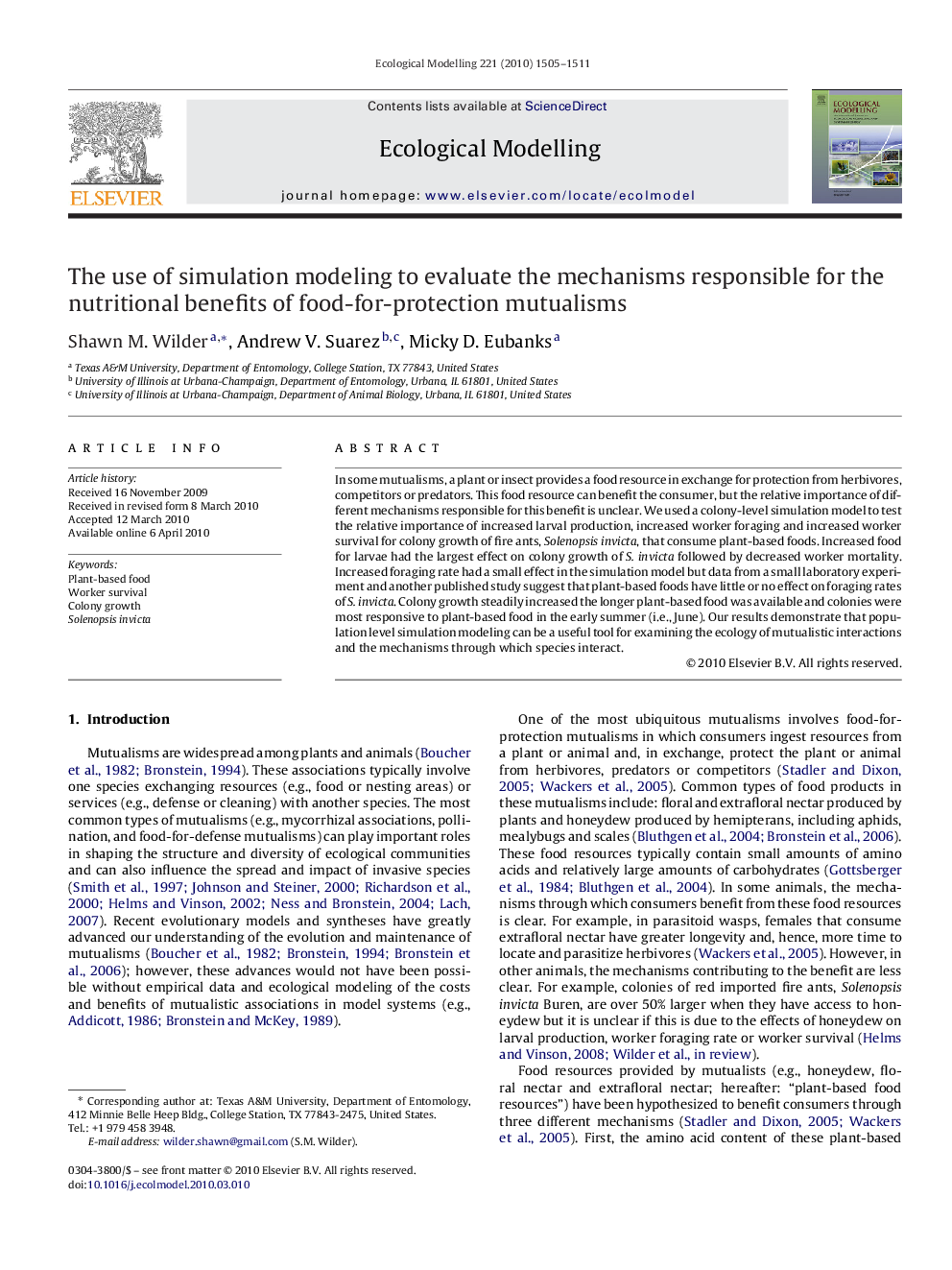| Article ID | Journal | Published Year | Pages | File Type |
|---|---|---|---|---|
| 4377417 | Ecological Modelling | 2010 | 7 Pages |
In some mutualisms, a plant or insect provides a food resource in exchange for protection from herbivores, competitors or predators. This food resource can benefit the consumer, but the relative importance of different mechanisms responsible for this benefit is unclear. We used a colony-level simulation model to test the relative importance of increased larval production, increased worker foraging and increased worker survival for colony growth of fire ants, Solenopsis invicta, that consume plant-based foods. Increased food for larvae had the largest effect on colony growth of S. invicta followed by decreased worker mortality. Increased foraging rate had a small effect in the simulation model but data from a small laboratory experiment and another published study suggest that plant-based foods have little or no effect on foraging rates of S. invicta. Colony growth steadily increased the longer plant-based food was available and colonies were most responsive to plant-based food in the early summer (i.e., June). Our results demonstrate that population level simulation modeling can be a useful tool for examining the ecology of mutualistic interactions and the mechanisms through which species interact.
